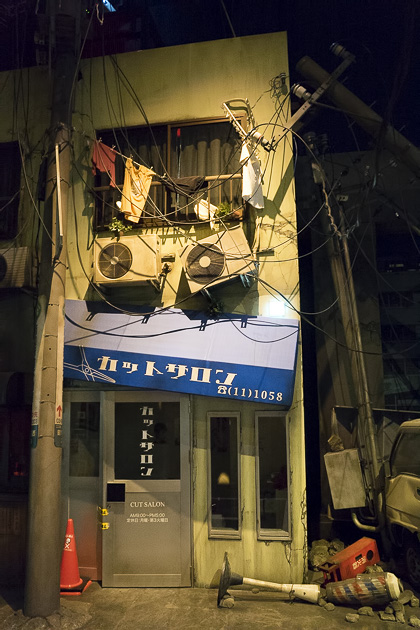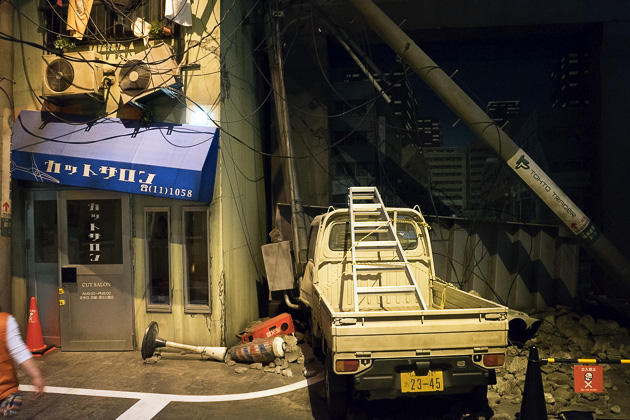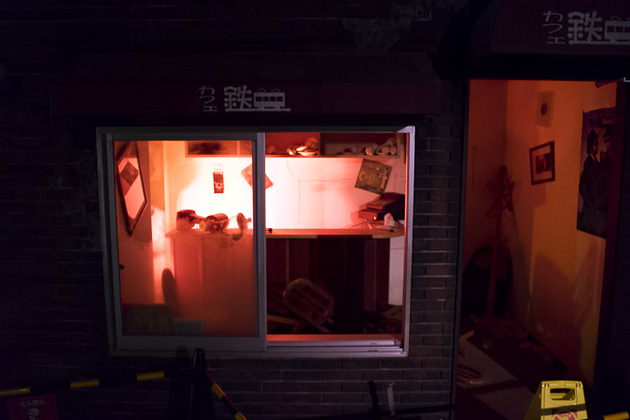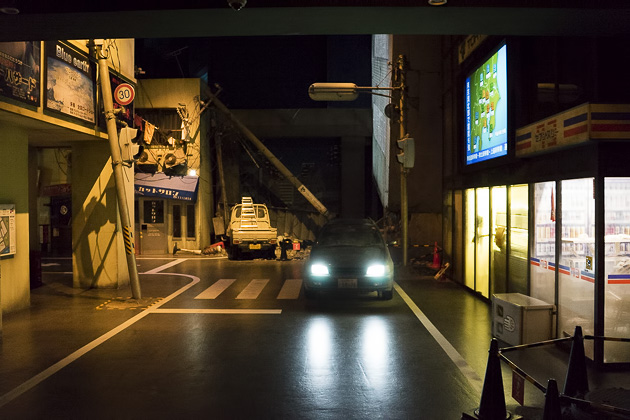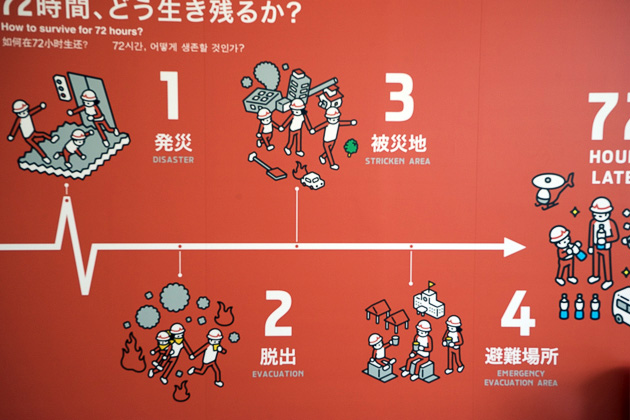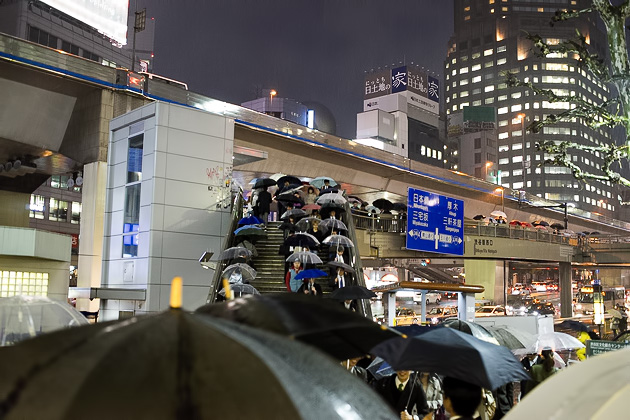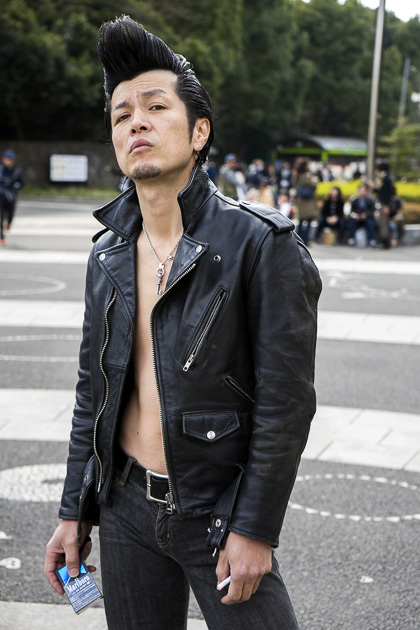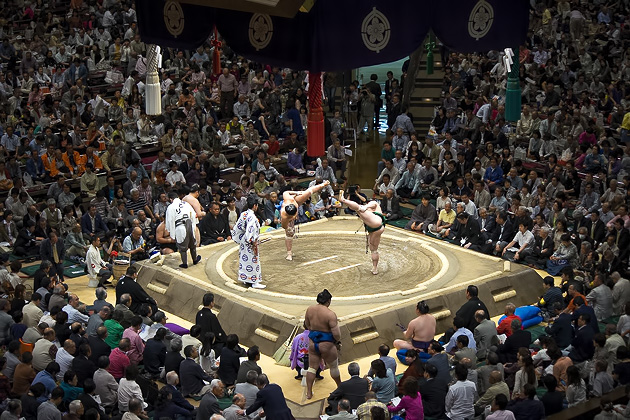The Rinkai Disaster Preparation Park
Mom always said that it’s best to be prepared. “Hope for the best, darling, but plan for the worst.” And in earthquake-prone Tokyo, the worst can be very bad indeed. Since we always listen to our moms, Jürgen and I dutifully visited the Disaster Preparation Park, on Odaiba Island.
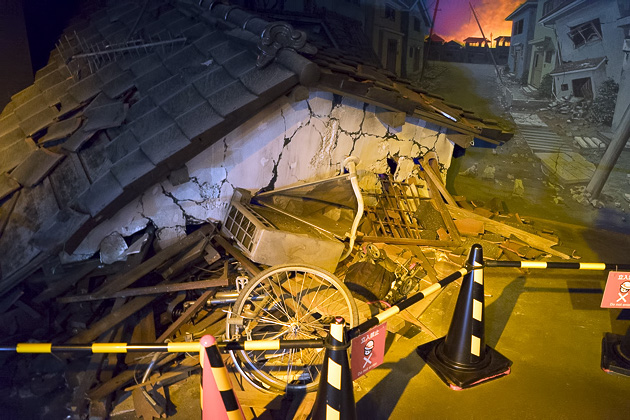
It’s not a matter of whether a mega-quake is going to devastate Tokyo, but when. The city lies on the intersection of three continental plates: the North American, upon which it’s built, the Pacific, which is being sucked underneath the North American by the forces of subduction, and the small Philippine Plate shoving its way into the mix. Scientists are in agreement that at some point in the near future, another massively powerful earthquake is going to rock Tokyo.
The city is doing its best to be ready. Strict construction laws ensure that all of its newer buildings can withstand powerful rumbling. Schoolchildren are drilled in how to behave in the event of a disaster. There are detailed evacuation plans and dedicated parks in which people are to congregate. September 1st is National Preparation Day, when everyone pauses their normal lives and participates in drills.
We had been flippant about our own preparedness, but on May 4th at 5:18 am, a strong quake shook us out of our beds. I was terrified, convinced that this was the big one. Whaddo-i-do, ohgod, whaddo-i-do… I had no idea! Do I run outside? Do I duck under the table? Do I get dressed? Do I scream?

Our ignorance about proper procedure was almost as scary as the quake itself, so it wasn’t long before we visited the Rinkai Disaster Preparation Park. This is a headquarters for Tokyo’s disaster planning, and when something happens, it’s from here that relief and rescue efforts will be coordinated. In periods of calm, visitors can enjoy the park’s green spaces, or test their survival skills in a mock disaster zone.
We decided to try out the disaster simulation. At the entrance, we were each given a Nintendo DS, then asked to step into an elevator. Soon, the lights flickered and the elevator began shaking. When the doors opened, we stepped into what looked like a war zone. An elaborate neighborhood disaster scene had been staged in the center’s basement, with fake fires raging, damaged air-conditioning units dangling above our heads, sirens and flashing lights. Our task was to look for clues and information that would help us survive the first 72 hours, which is approximately the length of time citizens would have to fend for themselves before help arrives.
Of course, when the earthquake does hit and a huge concrete block falls on your head, no amount of planning is going help. So, it probably comes down to luck. But still, after visiting the Rinkai Disaster Park, we began spending more time in Tokyo’s wide-open parks and its most modern buildings. Just in case something should happen, these are probably the safest places to be.
